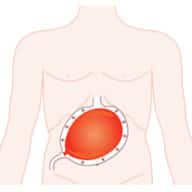Functional Dyspepsia: What You Need to Know
Dr. Drossman answers common questions on functional dyspepsia along with special guest, Professor Jan Tack, MD, President of the Rome Foundation. Dr. Tack is currently a Head of Clinic in the Department of Gastroenterology, a Professor in Internal Medicine and head of the Department of Clinical and Experimental medicine at the University of Leuven, and a principal researcher in TARGID (the Translational Research Center for Gastrointestinal Disorders) at the University of Leuven in Belgium.

Some of the key points you will learn from this video include:
- Functional dyspepsia is a condition characterized by symptoms that originate from the stomach region, with normal endoscopy.
- It can be considered the equivalent to irritable bowel syndrome in the upper part of the gastrointestinal tract.
- Functional dyspepsia patients have one or more of four typical symptoms: early satiation (inability to finish a normal sized meal), excessive fullness after a meal or pain or burning in the stomach region; gastroscopy is normal.
- Many patients also experience bloating, nausea and belching.
- Functional dyspepsia is highly prevalent, affecting up to 10% of the adult population.
- Symptoms seem to originate from disordered motility (contractions) of the stomach or from increased sensitivity of the stomach to a variety of stimuli.
- Treatment uses different approaches, such as acid suppressive drugs, drugs that modify gastric motor function (prokinetics) or neuromodulators that decrease sensitivity of the stomach.
Subscribe
Login
0 Comments
Oldest
Listen to our
latest Podcast!










